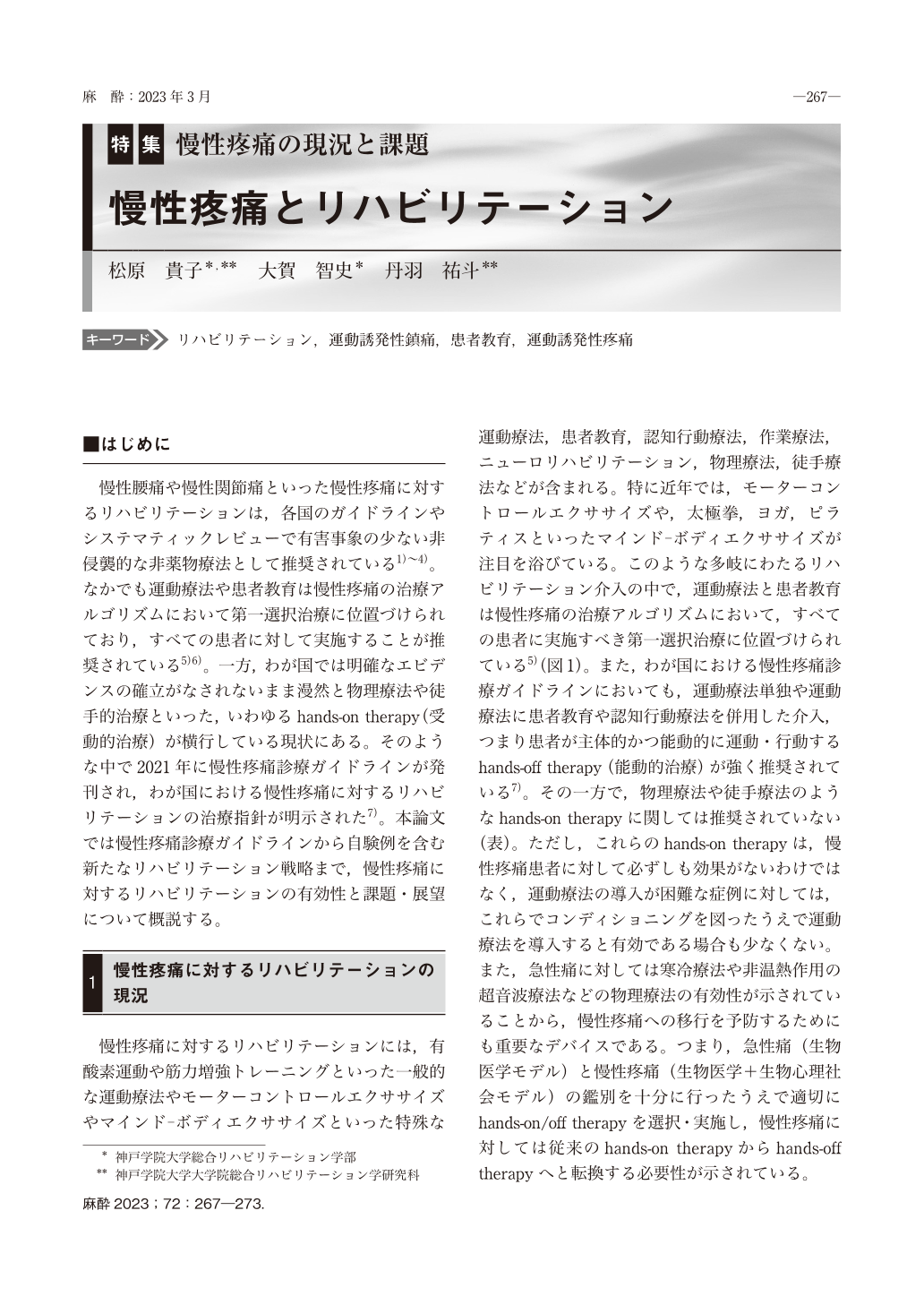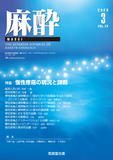Japanese
English
- 有料閲覧
- Abstract 文献概要
- 1ページ目 Look Inside
- 参考文献 Reference
はじめに
慢性腰痛や慢性関節痛といった慢性疼痛に対するリハビリテーションは,各国のガイドラインやシステマティックレビューで有害事象の少ない非侵襲的な非薬物療法として推奨されている1)~4)。なかでも運動療法や患者教育は慢性疼痛の治療アルゴリズムにおいて第一選択治療に位置づけられており,すべての患者に対して実施することが推奨されている5)6)。一方,わが国では明確なエビデンスの確立がなされないまま漫然と物理療法や徒手的治療といった,いわゆるhands-on therapy(受動的治療)が横行している現状にある。そのような中で2021年に慢性疼痛診療ガイドラインが発刊され,わが国における慢性疼痛に対するリハビリテーションの治療指針が明示された7)。本論文では慢性疼痛診療ガイドラインから自験例を含む新たなリハビリテーション戦略まで,慢性疼痛に対するリハビリテーションの有効性と課題・展望について概説する。
Rehabilitation for chronic pain is recommended in guidelines and systematic reviews. Among them, exercise and patient education, i. e., hands-off therapy, are positioned as the first-line treatments in the treatment algorithm for chronic pain, but hands-on therapy such as physical modalities and manual therapy are not recommended. In recent years, the effectiveness of combined interventions of exercise and patient education has been demonstrated. These rehabilitation programs must be adapted to each patient’s chronic pain condition such as pain sensitization or degree of inactivity/disuse, and psychosocial factors. For patients with chronic pain who are unable to actively perform exercise, passive exercise and motor imagery can be effective interventions. In addition, motor imagery with virtual reality has the same degree of analgesic effects as exercise in our research. These are expected to be a novel rehabilitation strategy for chronic pain.

Copyright © 2023 KOKUSEIDO CO., LTD. All Rights Reserved.


